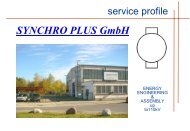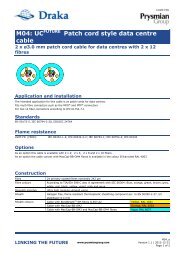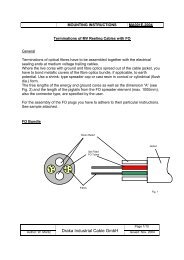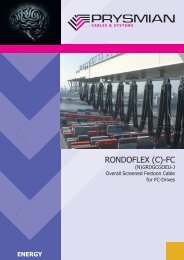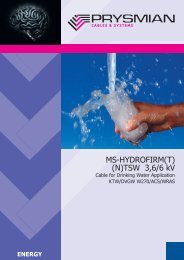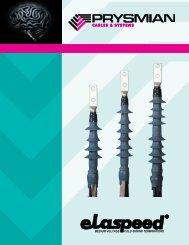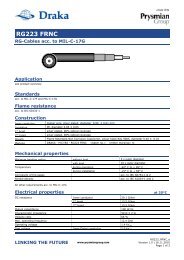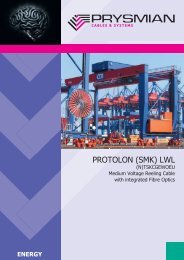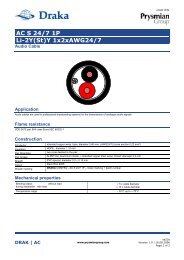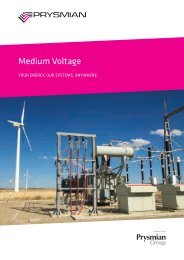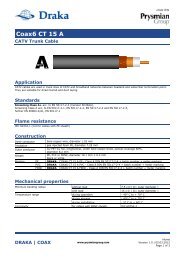Tables / Explanations AWG-Sizes - Prysmian Group
Tables / Explanations AWG-Sizes - Prysmian Group
Tables / Explanations AWG-Sizes - Prysmian Group
Create successful ePaper yourself
Turn your PDF publications into a flip-book with our unique Google optimized e-Paper software.
Anti-torsion braidSupport elementsFlexible electric cables for cranes and materialhandling equipment should not be stressed abovethe limits set out in table 4/11 (page 4/14) for thepermissible tensile forces. If higher tensile forcesare to be expected, support elements have to beprovided as part of the structure of the cable. Thereare several possibilities for integration of supportelements in cables. Two variants are normally used:>A support element located in the centre of thecable orA braid between the inner and outer sheath>The force/elongation diagram in Fig. 4/9 showsthe characteristic of these cables with differentarrangements of support elements as compared to acable without a support element.After a compacting phase, in which the individualcable elements are initially pulled together, until thecopper conductor begins to bear the tensile force,the cable without a support element remains linearin the first section of the curve (curve C). In the nextphase elongation increases considerably on a slightincrease of force.Cables with a braid as a support element betweenthe inner and outer sheath behave in the first sectionof the curve (curve B) in a similar manner to cableswithout a support element. The braid becomeseffective as a support element and bears the appliedforce only after the force and the consequentelongation have increased over a certain period oftime. The tensile force which is borne increases withless elongation than that of the cable without asupport element. The braid as a support element canprevent the cable, e.g. from tearing.Cables with a central support element behavedifferently provided that the support element wascorrectly dimensioned. The support element bearsthe tensile forces from the very beginning and thusrelieves the copper conductor (curve A).The force/elongation characteristics of the supportelements and of the copper conductors are decisivefor correct design of the support element anddimensioning of the flexible cables. The actual designshould be worked out in close co-operation with thecable manufacturer. An anti-torsion braid is not used for PLANOFLEX(not possible for this particular type of cable), andSPREADERFLEX (fully designed for best torsionalproperties).The effect of an anti-torsion braid on the angleof torsion a with increasing torsional moment forcomparable cables with and without an anti-torsionbraid is shown in Fig. 4/10.The flexible cable with anti-torsion braid tends totwist less than the flexible cable without a braid forthe same torsional moment. Anti-torsion braidFlexible electric cables for cranes and materialhandling equipment are often fitted with an antitorsionbraid between the inner and outer sheath inorder to minimize twisting under torsional loads.This applies to CORDAFLEX, PROTOLON.



